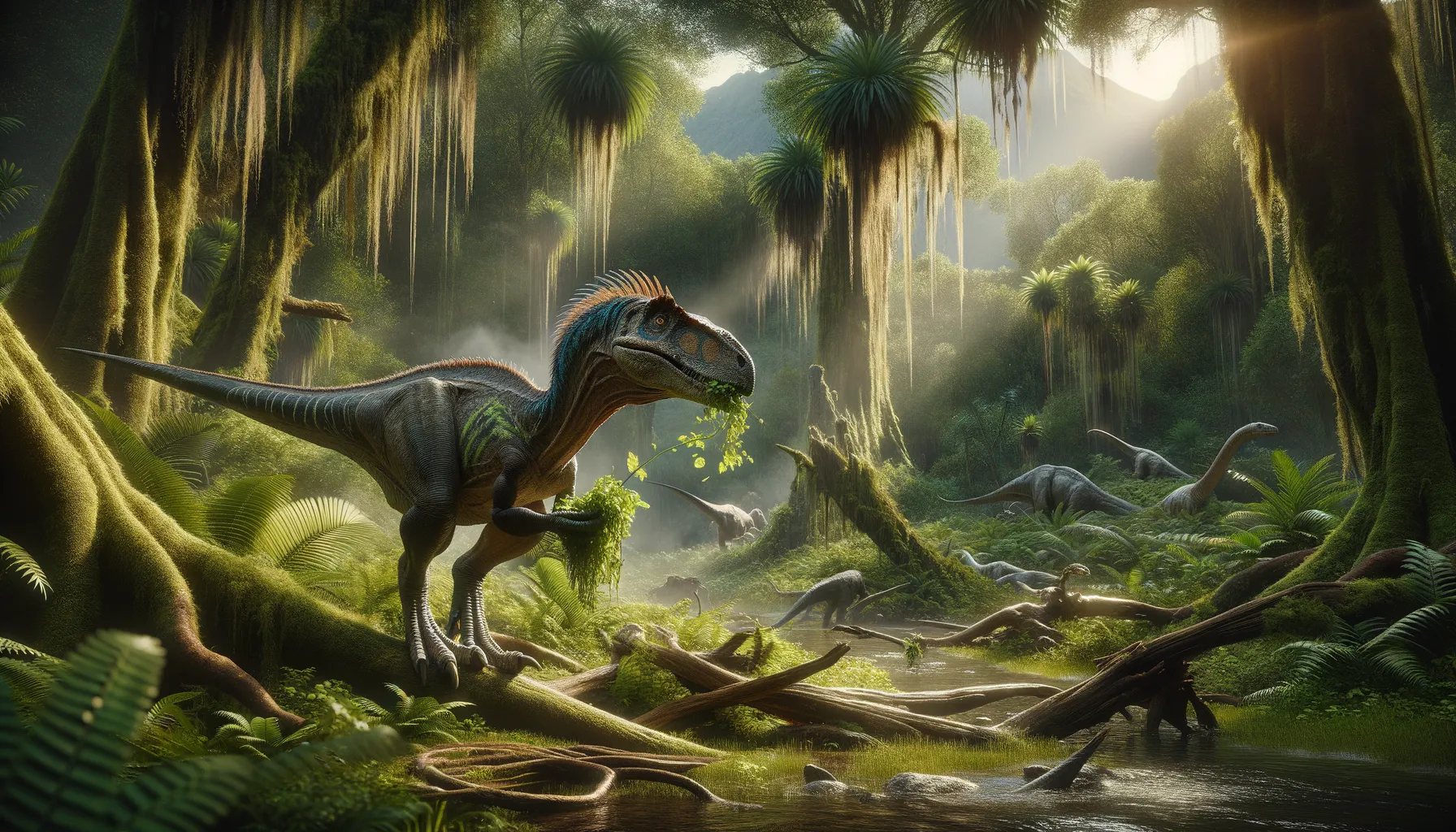
Talenkauen
Agile survivor of the Cretaceous plains.
Period
Cretaceous
Length
Roughly 4 meters long.
Height
About 1.5 meters tall.
Weight
Approximately 100 kilograms.
Talenkauen was a medium-sized ornithopod dinosaur, part of a group known for their bird-like features that lived during the Cretaceous period. Discovered in Argentina, this dinosaur was likely herbivorous, using its agile build to forage for food and evade predators. With unique characteristics in its ribs and a lightweight structure, Talenkauen offers insights into the diverse adaptations of ornithopods in prehistoric ecosystems.
Diet
Talenkauen was herbivorous, grazing on a variety of plants. Its teeth and jaws were adapted to efficiently process large amounts of vegetation daily.
Hunting
As a herbivore, it didn't hunt other animals. Its main focus was on foraging and avoiding predators through its agility and speed.
Environmental challenges
Talenkauen faced competition for food with other herbivorous dinosaurs. Climatic changes could have influenced its habitat and available resources. Predators also posed a significant survival challenge, requiring Talenkauen to remain ever-vigilant and quick on its feet.
Speed
Talenkauen was likely swift, aiding in evasion.
Lifespan
Its lifespan spanned several decades.
First discovery
Discovered in Argentina in 2000.
Fun Facts
- Talenkauen is a small ornithopod dinosaur that lived during the Late Cretaceous period.
- Its name means 'small valley' in the Mapuche language, reflecting the region in Patagonia where it was discovered.
- Talenkauen was about the size of a turkey, making it one of the smaller dinosaurs of its time.
- This dinosaur is part of the group known as 'hypsilophodonts', which were fast, bipedal herbivores.
- Talenkauen is known for its lightweight, hollow bones which helped it be a swift runner.
- The discovery of Talenkauen has provided key insights into the diversity of small herbivorous dinosaurs in South America.
- Talenkauen had unique features in its ribs that suggest it may have had an air sac system similar to birds.
Growth and Development
Much about its growth is inferred from fossil evidence, revealing a phase of rapid early growth. This rapid development was likely crucial for reaching a size that offered some protection from predators. Continued study of bone structures can better illuminate its developmental stages.
Habitat
It thrived in forested areas and open plains. The Cretaceous environment provided a wealth of flora to feed on. Talenkauen adapted well to a mix of terrains, indicating flexibility in its habitat preferences.
Interaction with other species
Talenkauen coexisted with numerous other dinosaur species. It likely competed with other herbivores for resources. Occasionally, it may have formed mixed herds for protection, utilizing the safety in numbers strategy.
Natural lifespan
It naturally lived for several decades if it avoided predation.
Reproduction
Talenkauen was oviparous, laying eggs similar to other dinosaurs of its class. Nesting behaviors are not well-documented but presumed to involve some level of parental care until the young could fend for themselves.
Social behaviour
It possibly exhibited some form of herd behavior, as seen in many herbivorous dinosaurs. Such social structures would have provided protection against predators. Cooperation could extend to shared foraging grounds and resource defense.
Fossil locations
The primary fossils have been unearthed in Patagonia, Argentina. These discoveries offer critical insights into the diverse prehistoric life of South America. Exploration continues to possibly uncover more specimens, enhancing understanding of its distribution.
